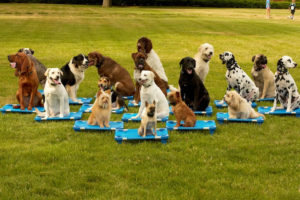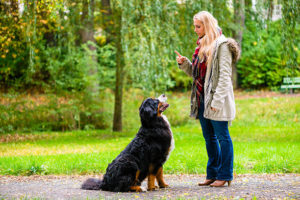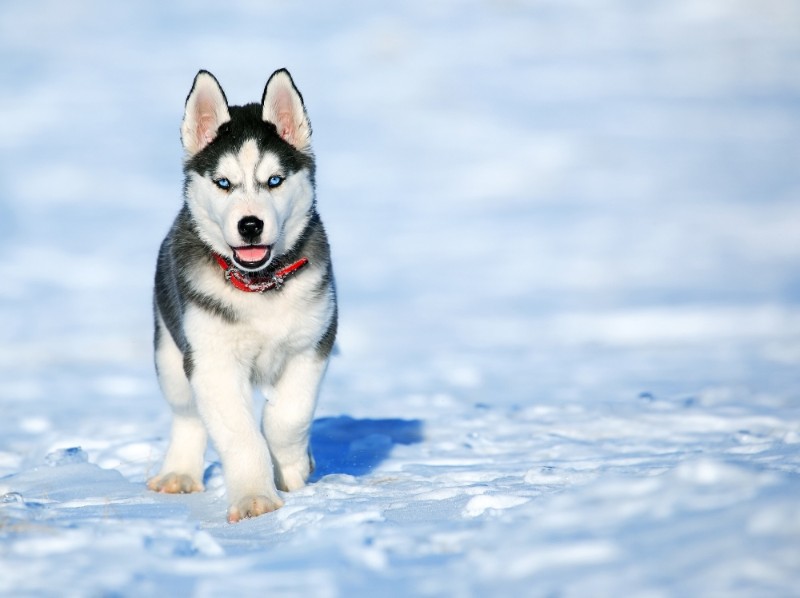Last Updated on September 8, 2018

Does your dog come when you call? Does your dog lie down on command, heal, fetch, stay, and stop barking without you throwing an old shoe at him or her? Do you control your dog or does your dog control you? Let me tell you something about dogs that you may not know. Your dog WANTS to obey you. He or she wants to please you in every way. In fact, the desire to obey and please is genetically bred into your dog. Here’s how it works…
You know how you try to please important people in your life? You go out of your way to accommodate your spouse or life partner, you help your kids as best you can, and, most importantly, you’ll move heaven and earth to please your boss. Well, dogs are the same way. They try hard to get along with their peers and they’ll move heaven and earth to please their boss. You see, dogs are “pack animals” and packs have a definite hierarchy of power that runs from the Alpha Male (the boss), all the way to to the very last dog in the pack. The role of Alpha Male is all powerful. He eats first, he mates first, and just a short growl in another dogs direction can a weaker dog currying. Dogs NEED an Alpha Male. If they don’t have one then their entire being is disrupted. They don’t know how to behave so, just like unsupervised children, they misbehave.
If a particularly willful dog looks around the pack and doesn’t see an Alpha Male, then he’s going to assume that HE’s the Alpha Male, and that can spell real problems in your home. Dogs have no concept of humans. Dogs think in the terms of “other dogs”, “prey”, and “enemies”. To a dog, you and I are simply dogs that don’t look or smell quite right. However, since your dog doesn’t have any other “pack” to belong to, your family will do just fine. Now, the only question is: Who’s the Alpha Male. If it’s you, and you exert your authority, your dog obeys. If it’s him or her, then you’ve got an out of control dog on your hands. And don’t let the term “Male” throw you off. A female dog will assume the Alpha position if there is no other dog to assume it, and you can be the “Alpha” whether you are a male or a female.
The important thing is that someone is going to end up being in control. Will it be you or your dog?
Once you are comfortable assuming the leadership position, training your dog will be a natural occurrence for him and her. All you have to do is know the rules.
Here’s the desired action
• Here’s the diagram
• Here’s how you do it
• Next lesson

I don’t assume that you already know the basics. It doesn’t leave you guessing at what some term or concept is about. Each command is a self-contained mini-lesson that gives you all of the information that you need to teach your dog how to perform the desired action.
Once you master one command you can move on to the next. Although you are free to teach new commands to your dog in any order that you want to, the Table of Contents is laid out in a natural progression so that each command builds on your dog’s mastery of the command that came previously. So not only is the book easy for you to understand and follow, it’s easy for your dog to follow too! Now, how’s that for being a “Dog Whisperer?”
Teach Dog to Sit
One of your first and easiest training techniques will be teaching your dog to sit on command. To do this, you must first, find a quiet area of the house away from distractions. Next, you must make sure that you have some of your dog’s favorite treats as a reward. You are now ready to teach your dog to sit.
Call your dog by his name to ensure that you get his attention. Then kneel down beside him with the treats in your hand. Place your hand that holds the treats near your dog’s nose so that he is aware that you have something for him. Then slowly raise your hand over your dog’s head. Do not hold the treats up too high or else your dog might jump to grab them.
With the other hand, push your dog’s behind down into a sitting position and firmly say “Sit” while still holding the treat over his head. If the dog jumps up to get the treat, firmly say “No”. Being firm, but not cruel, will be required when you are teaching your dog to sit.
Once the dog is sitting give him his reward. Repeat this action a few times until the dog knows that he will only get the treat when he is sitting. After a couple of times, you should not need to use your hand to push his bottom to the ground. It should start going down by itself, whenever you place the treats over your dog’s head.
You may need to practice this quite a few times till your dog understands what you want him to do. Remember to keep the sessions short- between ten to fifteen minutes per session, one to three times per day.
You can also train your dog to sit by rewarding him and saying, “Sit” every time you see him getting ready to sit down on his own accord. This way, he will learn that he will be rewarded every time he sits down. Once your dog is able to sit on command inside your home, you should be able to get him to do the same thing when he is outside.
It is quite a delight to interact with your dog once you have taught him to sit on command.
Teach Your Dog to Stay
Once you have trained your dog to sit, you can then move on to teaching him to stay.
Stand in front of your dog and command him to sit. Once he has sat, command him to stay. You can raise your hand as a signal to stop and hold it out in front of your dog. Then slowly move away from a step or two. If your dog stays there for a couple of seconds, return to him and give him a treat as a reward. Make sure that he stays in the sitting position as you reward him and does not stand or jump up. This will ensure that he does not think he is getting rewarded for getting up. This will facilitate in teaching your dog how to stay.
Do the same thing again, but move further away this time, and increase the time that you make him stay by a few more seconds. Keep doing this until your dog can stay put for at least one minute. Make sure that you reward him the whole time and give him plenty of praise if he does what you want. This will train your dog to stay.
If at any stage he starts to move or get up, go back to command him to sit. Do not give him any treats until he performs what you have asked of him. It is important to keep eye contact with your dog while you are stepping away from him to avoid losing his attention, as dogs have only a short attention span.
When you see that your dog is becoming bored or losing interest in the training, stop and give your dog a break. You can try again, at a later stage. You can also place food in front of your dog, make him sit and stay and then say the word “OK” when you want your dog to retrieve the food from the floor.
Hopefully, you will manage this exercise and teach your dog to stay.
Teach Your Dog to Come
Teaching your dog to come up to you when he is called is a very important lesson that needs to be taught as this gives you control over your dog. You must remember that it may take a couple of months before your dog comes running to you every time you want him to. So be persistent and have patience.
To start teaching your dog to come up to you when called, make sure that this session in a safe environment since your dog will not be on a leash. A good place would be one that is fully fenced or has an enclosure. Dogs do not know the dangers that are around them and it only takes a split second for an accident to occur.
You can teach your dog to come to you by whistling to him. But first, make sure that you are armed with treats and are willing to praise. Then, make sure that you whistle loud and that it is the same whistle each time.
Start by whistling while your dog is beside you and give him a treat as you continue to whistle. Gradually increase the distance from which you whistle at your dog. If the dog comes up to you, give him a treat and praise him a lot.
Continue to increase the distance from which you whistle, rewarding him each time he responds. Eventually, you will be able to call your dog no matter where he is, using your whistle.
It is very important not to call your dog to you and then do something unpleasant to him like get mad at him, put him on a leash or bathe him. If you do any of the above, your dog will think that every time that he comes to you, he is being punished for something. It is also important not to start chasing your dog around the yard or the house or else you will have trouble getting your dog to come to you.
I find that if my dog isn’t obeying the “Come” command if I start running down the street then my dog comes chasing after me. This way if your dog learns to chase or follow you, you will find that your dog is less likely to run away.
You may also teach your dog to come up to you by waiting for your dog to start walking towards you and saying “Come” when he about two-three feet away from you. Then, when he is close enough to make say “good boy”, pat him and shower him with lots of praise.
Keep practicing this for a couple of months, and make sure that you wait for your dog to be the one who starts walking towards you. Whenever the opportunity presents itself to start the training. Eventually, the dog will realize that when you say “Come” it is a good thing and he will be rewarded for it.
Teach Your Dog to Lie Down
Teaching your dog the lie down on command is more difficult than any of the other commands. But patience and practice can make you perfect.
First, you must get your dog into the sitting position. Once he has done this hold a treat in front of his nose. Get his attention by saying his name and then drop your hand down to the floor in front of his paws. As you see him go down say the command “Down” and then give him the treat. This is the first step in training your dog to lie down.
Make sure that you do not place the treat too far away in front of the dog or else he is likely to stand up to reach for the treat
Eventually, with practice, your dog will learn to go down as you put your hands down on the ground. You should also be able to get your dog to go down from the standing position using the same technique.
5 Steps To Getting Your Dog To Lie Down
1. Get the dog to sit – This command should be taught before you teach your dog to lie down.
2. Next, firmly give the Down command. Gently force his legs out in front to get him to lie down.
3. Praise the dog. Using the tone of your voice and your body language make it very clear that you are happy with him.
4. When you first get a dog to lie down, he will get up rather quickly. However, over time, with more training, you will be able to get him to sit and lie for longer periods of time.
5. Repeat these steps a couple of times each session, but don’t wear the dog out. Thus, while repetition is important to basic learning, please don’t overdo it. Space the training evenly over a few weeks. If you are in a real hurry to teach your dog to lie down, do a few sessions each day for a week.
Hopefully, soon you will be able to teach your dog to lie down.
Teach Your Puppy Not to Bite
It is common knowledge that all puppies bite at some stage. Their sharp teeth can be quite painful and very often our hands are targeted. Therefore, it is important to teach your puppy not to bite. Here are a few ideas that should be helpful in teaching your puppy not to bite.
Don’t wave your hands around in front of your puppy, as their natural reaction is to grab your hand just like they would if they had been playing with their brothers and sisters in the litter. Also do not grab their head, nose or face.
Make sure that you have plenty of soft toys available for your puppy to play with, since puppies like to be stimulated constantly. These toys can be used for them to grab, pull and to play fetch with.
When your puppy is playing well and isn’t biting your hands, shower him with plenty of praise. However, as soon as he bites your hands, immediately stop playing and walk away for a short period of time. This will teach your puppy not to bite.
Your puppy sees playing a game as a fun and entertaining activity. When your puppy does not play the way you want him to, you can stop playing. This puts a stop to the fun that he has been having. He will then learn that he needs to play nicely and be gentle for you to start playing again. Be consistent and play when he behaves well and take away fun when faced with bad behavior. This will be helpful in teaching your puppy not to bite.
When it comes to small children the last thing you want is for your puppy to bite them. Always make sure that the child moves slowly towards the puppy in order to touch him. Any quick or rapid movement will cause your puppy to get all excited. Teach your children to stop moving whenever the puppy starts getting excited. Always supervise children around puppies.
A puppy biting indiscriminately is no laughing matter. Take this seriously.
House Training Your Dog
It is important to establish proper house training while your dog is still young, as it will make life much easier for both you and your dog. Avoid any potty training issues down the track, as it can be extremely difficult to get a dog to change it’s ways once they are in a set pattern.
That is why it you need to pay attention to your dog’s behavior, and supervise him as much as possible when inside the home. This way you are going to avoid mistakes while house training your dog. You will firstly need to set up an area for your dog somewhere in the house we he can be left when you are unable to supervise. When you have found this area of the house or room, you need to make sure that it is suitably set up for your dog. Try not to locate the area where there is carpet or in any room where it would be difficult to clean up an accident, and make sure that he is not able to get into any mischief for example chewing pieces of furniture or going to the toilet on items that may not be suitable. With this you can begin house training your dog.
Try to clear as much of this as possible so that it is a clean safe zone for your dog.
When this has been done you will then need to line the floor with newspaper or any sort of paper that will be suitable for your dog to do his business on. Make sure that the whole area is covered, as this will make it a lot easier for messes to be cleaned up.
Your dog will start going to the toilet on these papers, and will in turn keep doing his business in a particular spot, when this has been happening consistently you can start taking away some of these papers.
If you find that after you have done this and your dog does his business where you took those papers away, you will need to put them back again until you are able to remove all of the papers, and have only left the papers where he has been doing his business.
You can then start to move theses papers closer to the door, and eventually, you can move the papers outside, by doing this you are trying to encourage your dog to go outside.
Be aware that since dogs can only hold their bladder for approximately an hour or so that it may take a bit of time before he can learn to control his bladder until you get home. This is the basic cause of irritation while you are house training your dog.
When you are able to be home with your dog you will need to pay constant attention to him, as the more time that you spend with him the faster he will become house trained, and you will be able to learn his behavior and be aware of signs that he may be ready to defecate or urinate such as sniffing and circling or scratching at the door.
Introduce him to one room at a time and always keep and eye on him until he is completely house trained.
It is important to let your dog know where it is appropriate for them to do their business, if he chooses the wrong place like inside the house let him know by saying the word NO in a deep assertive voice never yell at him or chase him then quickly clip a leash to his collar and immediately take him outside and let him do his business in a place that you want him to know is appropriate.
Words, like Go Potty or Go Toilet or Hurry Outside, can be used. By using these words the dog will associate them every time he does his business and learn that when you say them he is to go to the toilet.
As soon as he has done this praise him. It is very important to let your dog know that this is the right place for him to do his business, don’t just say something to him every time he does the wrong thing, if he gets it right be sure to let him know.
It is good practice to have a routine with your dog. Try and take them out at the same times every day for example after each meal, and after they have had their nap, generally every two hours to avoid accidents.
If you do this it will regulate when you need to take your dog outside. Make sure that you take him in and out the same door every time.
If you find it is too late and he has already done his business and you did not catch him doing it, never get mad at him or rub his nose in it. As the dog will not know what he is getting in trouble for because he will not remember that what he did was wrong.
It is important that you clean the soiled area immediately to avoid leaving a strong odor in that area, if you dog can smell it after it has been cleaned he is more likely to go in that spot again. Use a strong deodorizer or disinfectant.
By being consistent in your training your dog will learn a lot faster.
Resources :
https://en.wikipedia.org/wiki/Obedience_training
https://www.cesarsway.com/dog-training/obedience/5-essential-commands-you-can-teach-your-dog


